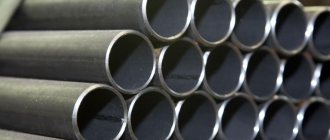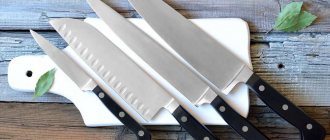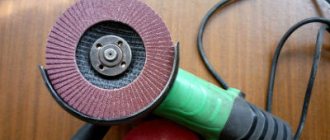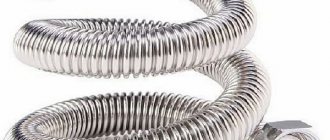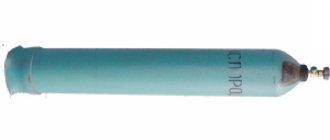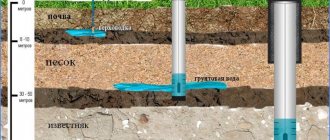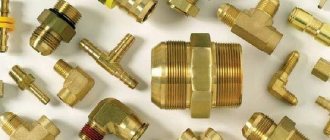home
About company
Directory
Round pipe
Seamless pipe
Seamless steel pipes are used in conditions that require reliability and increased strength characteristics: in industrial and municipal pipeline systems with high pressure and temperature, for transporting liquid and gaseous media, as well as in construction as structural elements. Seamless steel pipes differ according to the production method:
- hot-formed;
- cold-formed.
The initial stages of manufacturing hot-deformed and cold-deformed steel pipes are the same (obtaining a sleeve from a workpiece by extrusion or on a piercing mill). Then the blanks for cold-deformed pipes are cooled before further processing (unlike hot-deformed ones), and subsequent additional technological operations make it possible to adjust individual parameters: increase heat resistance, mechanical strength and surface accuracy class.
Straight-seam electric welded pipes
The main area of application for longitudinal welded pipes is process pipelines designed for medium internal pressure, but if necessary they are quite suitable for the installation of metal structures.
The standard for steel pipes produced by this method is determined as follows:
- Technological features of the production of longitudinally welded pipes are regulated by GOST 10704-91;
- According to the standard, the outer diameter of this type of pipe can vary from 10 to 1420 mm, and the wall thickness - from 1 to 32 mm;
- Products with a diameter of up to 426 mm can be produced in both measured and unmeasured formats, and the length of a steel pipe with a larger diameter can only be unmeasured;
- In addition to ordinary pipes, production can also create products that have a reinforced weld, but in this case, GOST 10706 will regulate the production process and the dimensions of the pipes.
There is another important point regarding steel pipes - a straight seam can be created using argon arc welding or induction welding. In the first case, a more reliable connection is obtained, but the second method is much cheaper and faster.
Electric-welded pipes: range and technical characteristics
Electric-welded tubular products of round cross-section are metal products in demand for the transmission of liquid and gaseous media, in construction, for the creation of welded and prefabricated metal structures for various purposes. Available in spiral and straight seam. The assortment complies with GOST 10704-91.
Table of diameters, thicknesses and weights of electric-welded metal pipes according to GOST 10704-91
| Outer diameter, mm | Wall thickness, mm | Weight 1 m, kg | Outer diameter, mm | Wall thickness, mm | Weight 1 m, kg |
| 1,5 | 0,54 | 89 | 3,5 | 7,38 | |
| 1,5 | 0,61 | 89 | 4 | 8,38 | |
| 1,5 | 0,68 | 102 | 4 | 9,67 | |
| 1,5 | 0,87 | 108 | 3,5 | 9,02 | |
| 2 | 1,18 | 108 | 4 | 10,26 | |
| 1,5 | 1,13 | 114 | 4 | 10,85 | |
| 32 | 2 | 1,48 | 127 | 4 | 12,13 |
| 1,5 | 1,42 | 133 | 4 | 12,73 | |
| 3 | 2,89 | 133 | 5 | 14,26 | |
| 1,5 | 1,61 | 159 | 4 | 15,29 | |
| 45 | 2 | 2,12 | 159 | 4,5 | 17,15 |
| 1,5 | 1,72 | 159 | 5 | 18,99 | |
| 48 | 2 | 2,27 | 159 | 6 | 22,64 |
| 3 | 3,55 | 219 | 5 | 26,39 | |
| 57 | 2,5 | 2,97 | 219 | 6 | 31,52 |
| 57 | 3 | 4,00 | 219 | 8 | 41,63 |
| 57 | 3,5 | 4,62 | 273 | 8 | 52,28 |
| 3 | 5,4 | 426 | 10 | 102,59 | |
| 76 | 3,5 | 6,26 | 1020 | 12 | 298,31 |
| 3 | 6,36 |
Seamless hot-formed pipes
The specifications for the lengths of steel pipes of this type are as follows:
- The production technology and standard sizes of hot-deformed pipes are regulated by GOST 8732-78;
- The outer diameter varies from 20 to 550 mm, and the wall thickness can range from 2.5 to 75 mm;
- Pipes can have measured and unmeasured lengths, which vary from 4 to 12.5 meters.
The dimensions of seamless steel pipe produced by this method may differ from standard ones. In extreme cases, a calibrated blank is taken, a through hole is drilled inside of it, and the result is a pipe with especially thick walls.
Seamless pipes: dimensions and characteristics
Seamless pipes are made by hot rolling from blanks called “sleeves”. To improve surface quality and increase dimensional accuracy, hot-rolled products are subjected to various types of cold deformation. The production of metal seamless hot-deformed pipes is carried out in accordance with GOST 8732-78, cold-deformed - with GOST R 54159-2010. The marking of rolled pipes indicates the outer diameter and wall thickness, expressed in millimeters.
Table of sizes and weights of hot- and cold-formed steel pipes of standard sizes
| Outer diameter, mm | thickness , mm | Weight 1 m, kg | Outer diameter, mm | Wall thickness, mm | Weight 1 m, kg |
| 3,5 | 2,46 | 108 | 6 | 15,09 | |
| 6 | 7,99 | 108 | 10 | 24,17 | |
| 60 | 8 | 10,26 | 114 | 5 | 13,44 |
| 4 | 5,82 | 133 | 5 | 15,78 | |
| 8 | 11,84 | 133 | 6 | 18,79 | |
| 9 | 14,21 | 140 | 5 | 16,65 | |
| 5 | 8,76 | 159 | 5 | 18,99 | |
| 76 | 6 | 10,36 | 159 | 6 | 22,64 |
| 8 | 15,98 | 159 | 8 | 29,79 | |
| 102 | 5 | 11,96 | 168 | 6 | 23,97 |
| 102 | 8 | 18,55 | 168 | 14 | 53,17 |
| 102 | 10 | 22,69 | 219 | 8 | 41,63 |
| 108 | 4 | 10,26 | 219 | 10 | 51,54 |
| 108 | 4,5 | 11,49 | 219 | 12 | 61,26 |
| 108 | 5 | 12,7 | 219 | 20 | 98,15 |
| 114 | 8 | 20,91 | 245 | 8 | 46,76 |
| 121 | 5 | 14,3 | 273 | 7 | 45,92 |
| 127 | 12 | 34,03 | 273 | 10 | 64,86 |
| 133 | 4 | 12,73 | 325 | 8 | 62,54 |
Kinds
Seamless pipes, depending on the specifics of production, can be cold- or hot-rolled. For their manufacture, only the strongest metal alloys (usually steel) are used, as well as various additives that have excellent anti-corrosion properties. This allows you to significantly expand the technical and functional capabilities of products and guarantees exceptional quality.
The following steel grades are used for the production of seamless products:
1. Steel alloy 12x18n10t. The composition includes particles of chromium, titanium and nickel, acting as alloying additives. Products made from this alloy are most in demand when installing household plumbing systems. Thanks to its excellent anti-corrosion functions, there is no external influence on the quality and composition of drinking water.
2. Steel 10x17n13m2t. It contains additives that prevent negative consequences from contact with aggressive acidic environments. Products made from this alloy are able to withstand extreme temperature loads (up to 600°C), which is why they are actively used in the chemical industry.
3. Alloy grade 06ХН28МДТ. Products made from this alloy have enhanced protection against high temperatures and chemically aggressive substances, and therefore are used in particularly difficult operating conditions.
4. High-alloy steel 10Х23Н18 with heat-resistant additives. The designated alloy is designed for operation under conditions of particularly extreme temperature loads. Products made from it can easily withstand temperatures up to 1100°C, which allows them to be used for arranging combustion chambers, high-temperature pipelines, etc.
Standards for Thick Walled Products
Thick-walled seamless steel pipe GOST 8732 is a high-strength product used for the construction of all kinds of metal structures or transportation of gases and liquids under high pressure. Welded products are used less frequently; preference is given to seamless pipes, and steel of different grades is suitable for this.
To prevent the inside of the pipe from rusting (important for supplying liquids of a certain chemical composition), thick-walled products are made from non-ferrous metals or are nickel-plated on the inside. They are used in the chemical industry and for transporting liquids from great depths.
Visually this is almost always noticeable, but there are standards by which thick-walled products are produced - within the range of 6mm - 12.5mm. If the hole inside is small and the wall is impressive, then these are especially thick-walled pipes. They are produced only by hot method.
The quality indicators of thick-walled pipes classify them according to the main standards: “B”, “C”, “D”:
- “B” - standardization of the chemical composition of the metal, including GOST 19281-89, GOST 4543-71, GOST 1050-88 and 8732-70;
- “B” - standardization of thermal indicators;
- “D” - without special regulation, but with internal pressure tests.
Thick-walled pipes bend poorly, but they are products of increased strength and resistance to mechanical stress. Their main function is to transport gaseous and liquid media under pressure. But they are also indispensable as frost-resistant building materials; large-format welded products are also suitable for this. These products are subject to the requirements of GOST 8732-78 and TU 14-3-1128-2000. To produce workpieces with thick walls, the following steel grades are usually used:
- 10G2;
- 09G2S (low alloy alloy for welded structures, silicon and carbon up to 1% and 2% manganese).
Welding of pipes with a seam is carried out with or without preheating. The less carbon in the steel grade, the easier the welding. When welding, the steel does not overheat, does not harden, and the viscosity does not decrease. And the alloy’s resistance to low temperatures makes it possible to effectively use 09G2S products even in the Far North.
Pipe classes
Steel pipes are divided into 6 main classes:
Class 1 - standard and gas pipes , which are used where there are no strict requirements for their quality. They are used for the manufacture of scaffolding, various fences, supports and irrigation systems. They are also used to supply liquid and gaseous substances.
Class 2 - used for installation of main pipelines in which gas, water, oil and petroleum products or fuel are supplied under low or high pressure.
Class 3 - used in systems that operate under high pressure or at high temperatures . For example: heating stations, oil pipelines or furnaces, chemical and food industries.
Class 4 - used for exploration of oil fields, installation of drilling and casing structures .
Class 5 ( structural class ) - used in automobile and carriage building, in steel structures: cranes, masts, supports and even in the production of furniture .
Class 6 - used in mechanical engineering in the manufacture of pump pistons, cylinders and other parts.
See also: Steel grades according to GOST, AISI, ASTM, ASME, En, DIN, WNr.
Range of steel water and gas pipes
Water and gas pipes are a type of welded pipe products, the main difference of which is the high reliability of the weld, verified by non-destructive testing methods. These metal products are intended for the installation of water, gas, and heat supply networks. Can be used in distribution and main pipelines. Capable of withstanding high pressures of transmitted media. The range (diameter, wall thickness) of steel water and gas pipes (WGP) is regulated by GOST 3262-75. The marking of these pipe products indicates the nominal bore (DN) and wall thickness.
Table of sizes and weights of steel water and gas pipes
| Du, mm | Wall thickness, mm | Weight 1 m, kg |
| 2,8 | 1,28 | |
| 2,8 | 1,66 | |
| 3,2 | 3,09 | |
| 3,5 | 3,84 | |
| 3,5 | 4,88 | |
| 100 | 4,5 | 12,15 |
Spiral seam electric welded
Standard and sizes
- Spiral welded pipes are produced in accordance with GOST 8696-74;
- As you might guess, their main difference from straight-seam ones is that the flat workpiece is rolled into a pipe in the form of a spiral and boiled. This ensures the pipe's ability to withstand greater pressure;
- According to the standard, the dimensions of a steel pipe are as follows: outer diameter from 159 to 2520 mm, wall thickness 3.5 - 25 mm;
- Pipes are supplied in lengths from 10 to 12 meters.
Application
The standard specifically states that this standard does not apply to main pipes for oil and gas pipelines.
However, the difference concerns exclusively the range of pipes. From the point of view of the production method, spiral-welded pipes can be used for heating mains, water mains and oil and gas pipelines. This is what we are seeing.
Spiral welded pipe is also easy to recognize
Methods for producing steel pipes
Metallurgical plants use 4 main technologies in the production of pipes:
Seamless pipes are pipes that do not have a weld or other joints. Manufactured by rolling, forging, pressing or drawing:
- Cold rolling is the production of seamless pipes from pre-cooled billets.
- Hot rolling - production of seamless pipes from heated billets;
Welded pipes are divided into:
- Welded spiral rolled pipes - pipes produced using this technology are characterized by the presence of a spiral seam. Steel sheets are used as blanks.
- Welded longitudinal bars . The starting material is the same sheet blanks. Distinctive features are the presence of a longitudinal straight seam.
The use of these methods makes it possible to produce steel pipes of any type, from round “plumbing” pipes used in water supply, including oval and thick-walled ones, to “structural” pipes - square and rectangular. The peculiarities of the technological processes used impose a number of restrictions on the standard sizes of rolled pipes.
Standards for Thick Walled Products
Thick-walled seamless steel pipe GOST 8732 is a high-strength product used for the construction of all kinds of metal structures or transportation of gases and liquids under high pressure. Welded products are used less frequently; preference is given to seamless pipes, and steel of different grades is suitable for this.
To prevent the inside of the pipe from rusting (important for supplying liquids of a certain chemical composition), thick-walled products are made from non-ferrous metals or are nickel-plated on the inside. They are used in the chemical industry and for transporting liquids from great depths.
Visually this is almost always noticeable, but there are standards by which thick-walled products are produced - within the range of 6mm - 12.5mm. If the hole inside is small and the wall is impressive, then these are especially thick-walled pipes. They are produced only by hot method.
The quality indicators of thick-walled pipes classify them according to the main standards: “B”, “C”, “D”:
- “B” - standardization of the chemical composition of the metal, including GOST 19281-89, GOST 4543-71, GOST 1050-88 and 8732-70;
- “B” - standardization of thermal indicators;
- “D” - without special regulation, but with internal pressure tests.
Thick-walled pipes bend poorly, but they are products of increased strength and resistance to mechanical stress. Their main function is to transport gaseous and liquid media under pressure. But they are also indispensable as frost-resistant building materials; large-format welded products are also suitable for this. These products are subject to the requirements of GOST 8732-78 and TU 14-3-1128-2000. To produce workpieces with thick walls, the following steel grades are usually used:
- 10G2;
- 09G2S (low alloy alloy for welded structures, silicon and carbon up to 1% and 2% manganese).
Welding of pipes with a seam is carried out with or without preheating. The less carbon in the steel grade, the easier the welding. When welding, the steel does not overheat, does not harden, and the viscosity does not decrease. And the alloy’s resistance to low temperatures makes it possible to effectively use 09G2S products even in the Far North.
